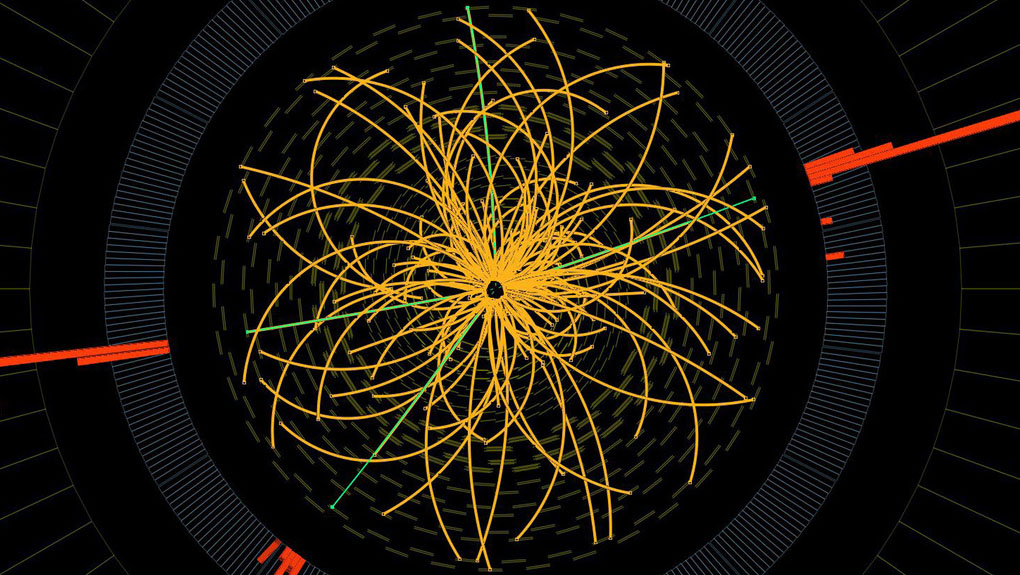what alcohol can tell us about the fate of the universe

Once upon a time, we looked at an explanation for dark matter involving a theory about how all matter around us could decay over 6.6 × 1033 years and noted that there’s a controversy as to whether protons actually decay. To help settle this, astronomers took advantage of the fact that telescopes are relativistic time machines, and peered through them at a galaxy known as PKS 1830–211 — a name only a scientist could love — that just so happens to be a gravitational lens allowing us to see some 7 billion years back. To be a bit more precise, it lets us look at clouds of alcohol molecules formed eons ago in deep space and compare their spectrum to that of booze analyzed in a lab right here on Earth. Don’t worry, no hard liquor was harmed in the process as the alcohol in question is methanol, the kind used in fuel and manufacturing, and which causes blindness if ingested, not the ethanol in which we can indulge. But even if no buzz was killed for the sake of science, what exactly does looking at the light spectra of alcohol tell us about how our universe formed and its possible fate many quadrillions of years from now?
Well, the spectrum of a molecule depends on μ, the ratio of proton to hydrogen mass. That’s an extremely important metric because it lets us measure the strong force, one of the fundamental interactions of matter as we know it responsible for building atomic nuclei. Because the masses involved are created by interactions of elementary particles representing the strong force, if μ falls below or exceeds 1,836.15267245(75) and the difference is reproducibly recorded, we can say that something changed the effect of this fundamental force on matter. Hence, if the 7 billion year old methanol emits an appreciably different spectrum from methanol we create today, this would mean that one of the fundamental forces has changed as the universe grew and matter is decaying on cosmic time scales. Lucky for us, turns out that atoms are very much stable since the spectrum of methanol was for all intents and purposes identical over 7 billion years, which is just over half of the way back to the Big Bang itself.
This tells us a couple of things about the fate of the universe. First is that the Standard Model of physics is still accurate and can make viable predictions about atomic structure and decay. The second is that matter will continue to be matter at the end of the universe or decays so slowly it would only matter on time scales far exceeding the lifetimes of supermassive black holes. Finally, it allows us to rule out overly exotic explanations for the origins of dark matter involving decay of particular subatomic elements or quirky behavior of the strong force since these results match a number of previous experiments designed to find out the same thing. In a universe flying apart, churning with explosions, collisions, and radiation, it’s nice to know that you can rely on matter that makes you and the planet on which you live isn’t also slowly decaying on you like a ticking cosmic time bomb. And while space may be out to get you through GRBs, asteroids, and huge galactic train wrecks, it will at least spare the very fabric of your existence.
See: Bagdonaite, et. al. (2012). A stringent limit on a drifting proton-to-electron mass ratio from alcohol in the early universe Science DOI: 10.1126/science.1224898





